TRAVEL
A World of Art: San Francisco
For the past few months San Francisco has been the center of the art world with three of the most prestigious presentations ever seen at one time, write Al Auger and Natalie Pellolio.
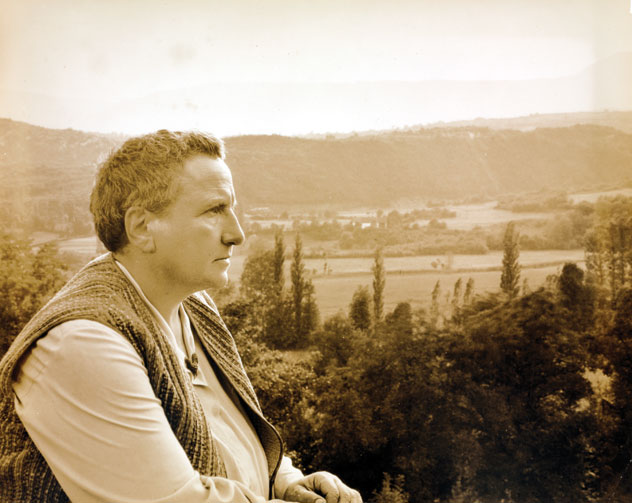
(Above): George Platt Lynes, Gertrude Stein, Bilignin, 1931, toned gelatin silver print. Courtesy of the Baltimore Museum of Art, The Cone Collection, Gift of Adelyn D. Breeskin BMA 1985.3, © Estate of George Platt Lynes, Seeing Gertrude Stein: Five Stories, Contemporary Jewish Museum (May 12, 2011 – September 6, 2011).
For the past few months San Francisco has been the center of the art world with three of the most prestigious presentations ever seen at one time. Closing on September 6 were the “Steins Collect: Matisse, Picasso and the Parisian Avant-Garde” at the San Francisco Museum of Modern Art and the all-encompassing family history, “Seeing Gertrude Stein: Five Stories” at the Contemporary Jewish Museum. The jewel of this trio is “Picasso: Masterpieces from the Musée National Picasso, Paris” at the de Young Museum running through October 10 (see Siliconeer, September 2011 issue for a retrospect of the SFMOMA collection.) The fourth serendipitous treat is the highly acclaimed Woody Allen film now showing around the country, “Midnight in Paris,” a fantasy comedy where a nascent writer finds himself transported to the world of Stein, Picasso, Dali, Hitchcock, Fitzgerald, et al.
But, throughout the exhibitions at SFMOMA and the de Young is the conundrum is the hovering presence of Gertrude Stein (1874-1946). Who was she and what was her role – and her siblings – in a rarefied world that changed the breathe and focus of modern art and literature forever? For that we turned to the “Seeing Gertrude Stein: Five Stories” as constructed at the Contemporary Jewish Museum that closed Sept. 6.
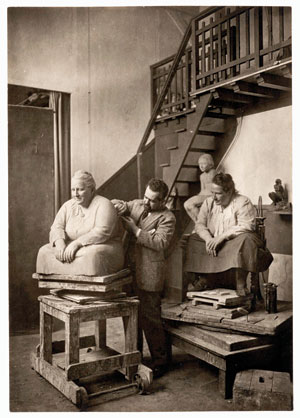 (Right): Man Ray, Gertrude Stein posing for Jo Davidson, 1922, gelatin silver print. Courtesy of the National Portrait Gallery, Smithsonian Institution, © 2010 Man Ray Trust / Artists Rights Society (ARS), New York / ADAGP, Paris, Seeing Gertrude Stein: Five Stories, Contemporary Jewish Museum (May 12, 2011 – September 6, 2011). (Right): Man Ray, Gertrude Stein posing for Jo Davidson, 1922, gelatin silver print. Courtesy of the National Portrait Gallery, Smithsonian Institution, © 2010 Man Ray Trust / Artists Rights Society (ARS), New York / ADAGP, Paris, Seeing Gertrude Stein: Five Stories, Contemporary Jewish Museum (May 12, 2011 – September 6, 2011).
The moment you enter you are greeted by the life-size figure of Stein in a Buddha-like sitting, eyes downcast, hands clasped. The mood is established; you are now, along with the ebb and flow of the contemplative crowd, a welcomed guest in the most famous salon in Europe. Stein may no longer be among us, perhaps, but her muse will live forever in the art and words of some of the greatest works of modern times.
Unfortunately, to most people today Gertrude Stein was a one-dimensional character whose claim to fame were one-liners (“There’s no there there) and living vicariously off the fame of her Salon guests such as “Lost Generation” expatriate writers like the young Hemingway and Fitzgerald and avant-garde artists like Matisse, Dali, Picasso, etc. The visitors to Five Stories have been consistently large, a Contemporary spokesperson told me. This was borne out, on my visit, by the constant flow of people passing through the galleries. Mostly elderly, but a surprising number of young people, as well.
As the Five Stories unfold, you discover a rebel who lived a Bohemian lifestyle and an open lesbian relationship with her life-long companion Alice B. Toklas. Along with her two brothers, Leo, Michael and his wife, Sarah, Gertrude recognized early-on the genius of the yet recognized creators of the schools of Impressionism and cubism art. The walls of her salon at 27, rue de Fluerus were literally covered with paintings by the then unknown artists such as Picasso, Matisse, Cezanne and so many more.
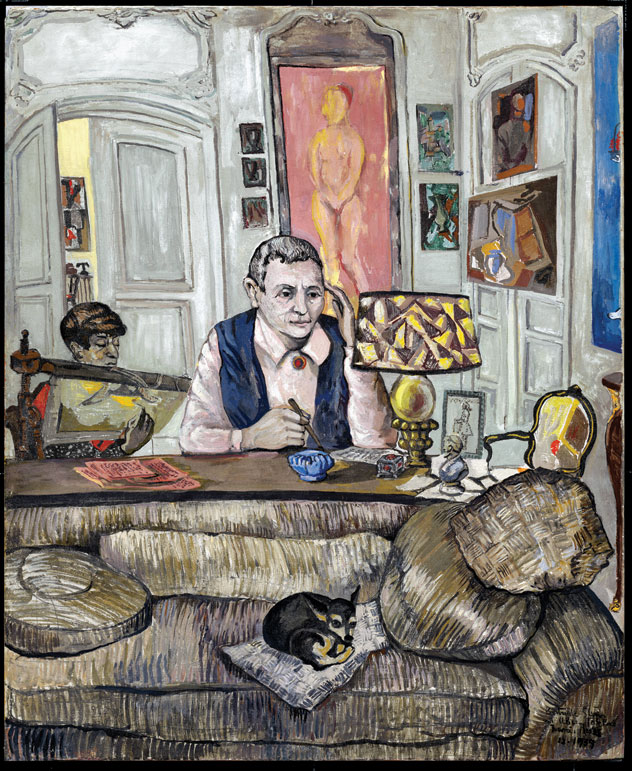
(Above): Sir Francis Cyril Rose, Alice B. Toklas and Gertrude Stein, 1939, tempera and gouache on cardboard. Courtesy of the National Portrait Gallery, Smithsonian Institution; gift of the T. Mellon Evans Foundation and Gallery purchase, Seeing Gertrude Stein: Five Stories, Contemporary Jewish Museum (May 12, 2011 – September 6, 2011).
Laid out chronologically, the Five Stories dramatically demonstrates the wide varied scope of Stein’s own genius. A recognized author, poet, essayist and biographer, she could proudly point to some 40-odd books published in her time. In the early 1930s Stein wrote the opera libretti for Four Saints in Three Acts and The Mother of Us All in collaboration with composer Virgil Thompson. The Broadway crowd and critics made the opera Four Saints and the all-black cast an overnight sensation. She followed these successes with a collaboration on the ballet A Wedding Bouquet.
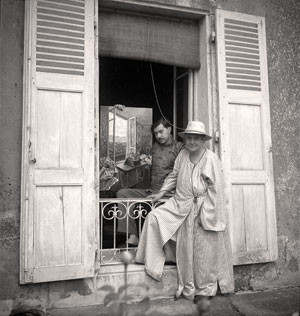 (Right): Sir Cecil Beaton, Sir Francis Rose and Gertrude Stein, Bilignin, 1939, gelatin silver print. Courtesy of the Cecil Beaton Studio Archive at Sotheby’s, Seeing Gertrude Stein: Five Stories, Contemporary Jewish Museum (May 12, 2011 – September 6, 2011). (Right): Sir Cecil Beaton, Sir Francis Rose and Gertrude Stein, Bilignin, 1939, gelatin silver print. Courtesy of the Cecil Beaton Studio Archive at Sotheby’s, Seeing Gertrude Stein: Five Stories, Contemporary Jewish Museum (May 12, 2011 – September 6, 2011).
Strolling the Galleries, you are surrounded by photos, paintings and diverse art forms of Stein, attesting to the belief she was the most photographed, painted and written about woman of our time. This collection will next be seen at the Smithsonian’s National Portrait Gallery in Washington D.C.
This deeply profound look at the works and legacy of Gertrude Stein illustrates the uniqueness of the Contemporary: unlike most important museums, the Contemporary has no permanent exhibition, its ever-changing exhibitions focus on cultures and people who leave a footprint or memory that live on forever. It is also one of the best buy museum tour in The City as its ticket prices never change with each touring collection. Showing now is the life, art and magic of Harry Houdini, the greatest escape artist ever. Houdini: Art and Magic will be open through January 16, 2012.
TICKET INFORMATION
The Contemporary Jewish Museum is located at 736 Mission St., San Francisco. Open daily (except Wednesday) 11 AM-5 PM and Thursday, 1 PM-8 PM. Admission is $12 adults, $10 students and seniors (with valid ID) and $5 on Thursday after 5 PM. Youths under 18 free at all times. For information visit their Website at cjm.org or call 415-655-7800.
Picasso: Masterpieces from the Musée National Picasso, Paris
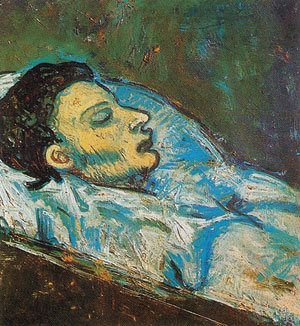 (Right): Picasso, The Death of Casagemas (1901) (Right): Picasso, The Death of Casagemas (1901)
Since its $202 million renovation in 2005, critics have chastised the de Young Museum for hosting uncontroversial exhibitions that guarantee high turnouts and higher revenue streams. Fashion-oriented exhibitions like Nan Kempner: American Chic and Balenciaga in Spain may draw large crowds, but critics contend that the museum should encourage riskier shows if it wishes to solidify its reputation as a world-class art museum. In 2007, San Francisco Chronicle art critic Kenneth Baker explained, “Despite the booming attendance, some local artists, art dealers, collectors and other frequent museumgoer have begun to question [de Young Museum Director John Buchanan’s] priorities, wondering whether he is more interested in fluff than fine arts.”
Last April, the New York Times used the de Young as a primary example of this phenomenon, scrutinizing contemporary museum culture’s fascination with fashion exhibitions. The article quotes art blogger Tyler Green, who writes, “They do obvious shows that they take from elsewhere… They are gate-turning shows rather than scholarly investigating shows that you would expect from a mature museum. It might be O.K. in a smaller or newer city. I wish [the de Young] did more probative shows.” All museums aspire to boost attendance, but to what extent is it acceptable to sacrifice quality for crowds?
Of course, this criticism is harsh and reductive. The de Young Museum hosts and curates dozens of shows each year, many of which represent its diverse collection and excellent curatorial team. Since its renovation, the museum is busier than it has ever been, in large part due to John Buchanan’s direction. Buchanan dismisses the belief that fashion exhibitions lack the artistic relevance of other exhibitions. He argues, “Our shows are diverse and rich, and reflect the museum’s own personal collections. We have an exhibition coming devoted to Picasso.” Strangely enough, Picasso: Masterpieces from the Musée National Picasso, Paris, on view at the de Young through October 10th, is at risk of falling into the same trap as the fashion-related shows that Buchanan’s critics lambaste.
The problem with this critique is that Picasso: Masterpieces from the Musée National Picasso, Paris is an excellent exhibition. The show, which features over 150 paintings, sculptures and works on paper, is comprised entirely of works from Picasso’s personal collection. Upon his death, Picasso’s estate was given to the French government, and 5,000 of these 70,000 works were delineated for the newly instituted Picasso Museum in Paris. Because the museum is closed for renovation until 2013, this exhibition of 150 works is able to travel to the United States. The show, co-organized by Tim Burgard from the Fine Arts Museums of San Francisco and Anne Baldessari from the Musée National Picasso, is arranged chronologically by each phase of Picasso’s prolific career.
The selection of works is impressive in its breadth, but also elucidating in that each work is from Picasso’s personal collection. We see works from each of his artistic phases, beginning with The Death of Casagemas (1901), one of his earliest works and an excellent example of his early post-Impressionist influences. As we follow Picasso’s progression from figurist to cubist to neoclassicist, the juxtaposition of his studies with his final works dutifully illustrates his eighty-year process. The works are allowed to speak for themselves, placed beside simple, austere labels that don’t overshadow the tactility and subtlety of many of his drawings. Though many of his major works, including Les Demoiselles d’Avignon and Guernica, are not present—neither work belongs to the Musée National Picasso—the exhibition does not suffer; rather, his extensive career is bolstered by their absence, drawing attention to lesser-known works.
Though exhibitions of Picasso’s work are not rare or particularly original, it is refreshing to see a show that highlights his personal collection with breadth and curatorial finesse. The exhibit represents an excellent compromise on behalf of the Fine Arts Museums of San Francisco, in which a high-profile, high-revenue show can function simultaneously as an intelligent and original presentation of a master’s work. As with Balenciaga in Spain, the de Young shows us how a seemingly exhausted topic can be approached from a fresh perspective, and should be viewed with an open mind and a respect for the artist who has come to represent a century of western art history.
— Natalie Pellolio
TICKET INFORMATION
Admission prices: adults $25, seniors 65+ $22, students with current ID $21, youths 6–17 $15, members and children 5 and under free.
Groups of 10 or more have access to priority booking and discounted rates. For additional information please contact the group sales office at groupsales@famsf.org or by calling 415.750.3620.
|